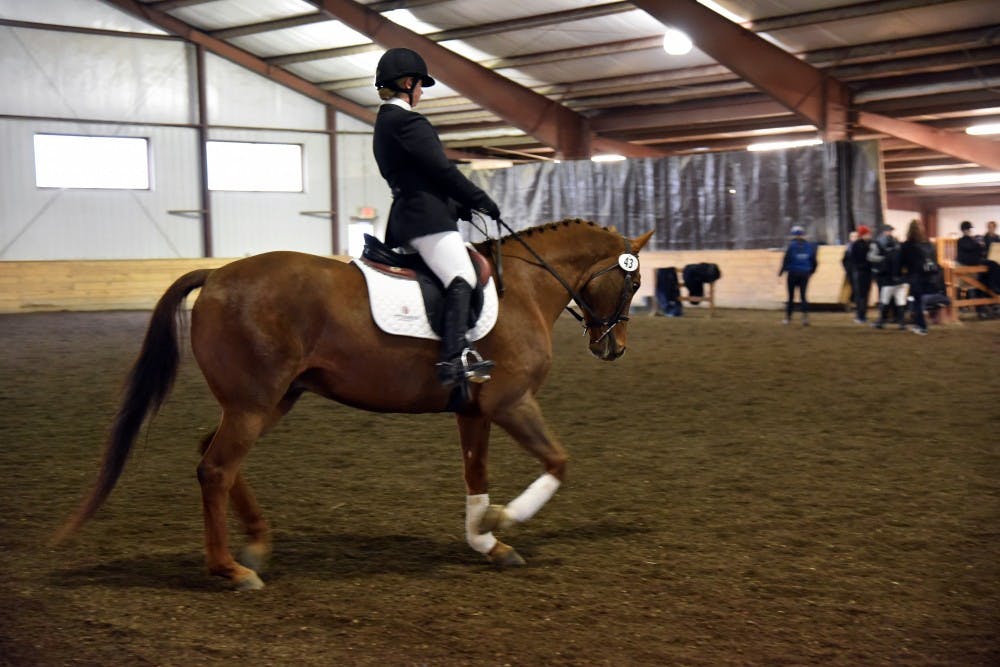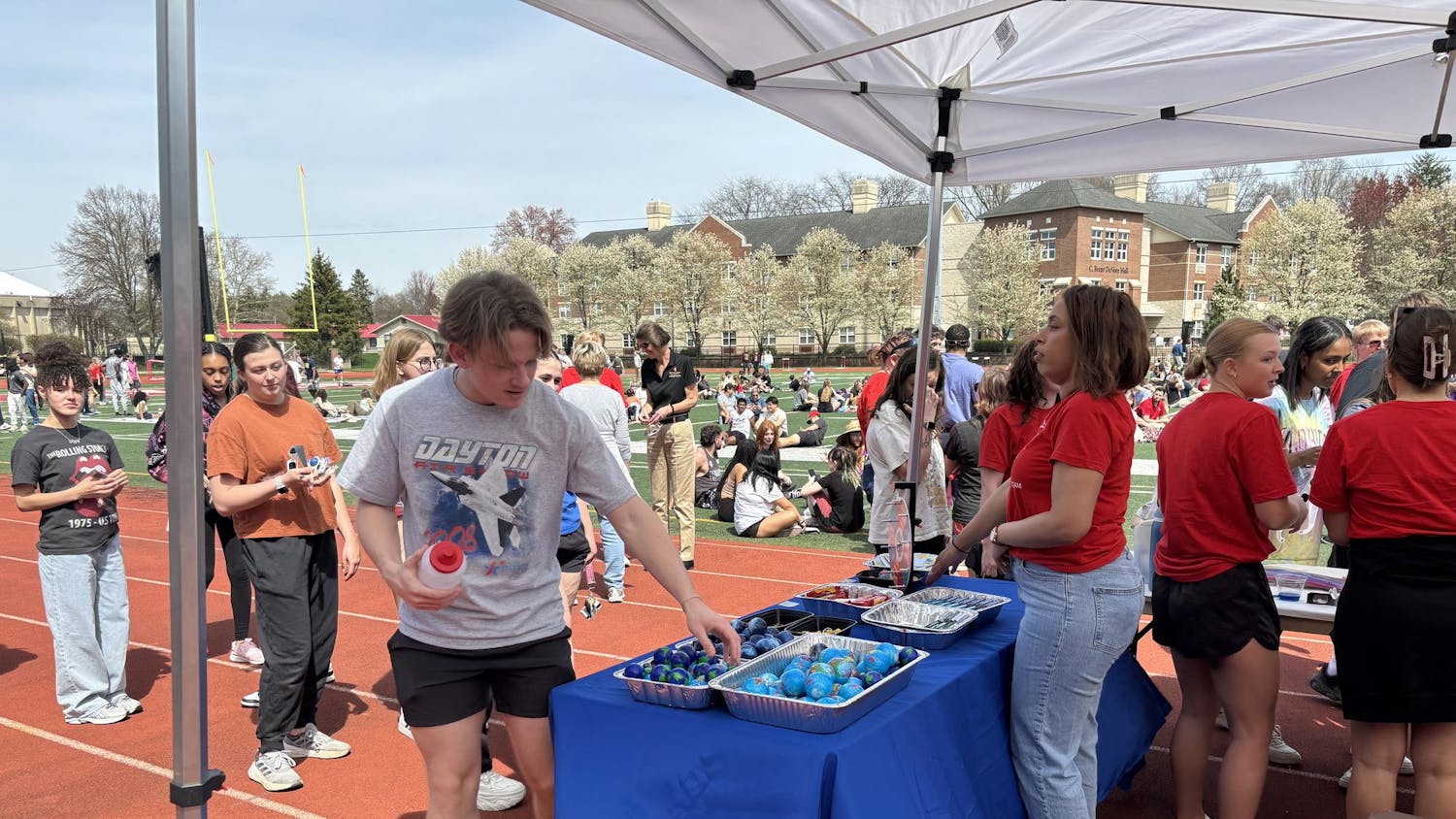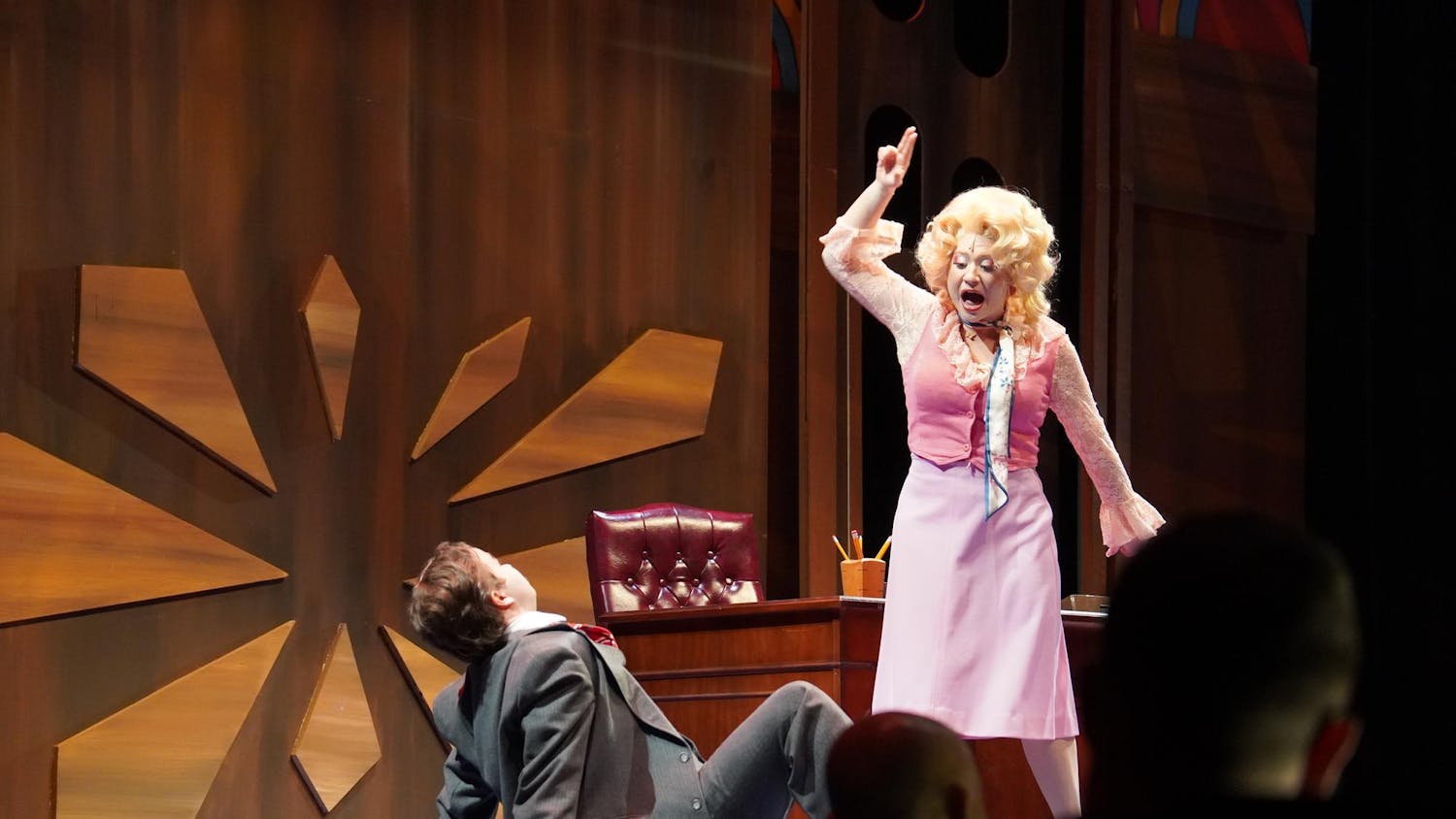Known for their riding pants and boots, Otterbein’s equestrian team is recognized as a club sport. The program has met a lot of marketing goals by offering a riding scholarship, hosting high school riding shows and advertising Otterbein on saddle pads and equipment when traveling to shows. These tactics have helped increase awareness and allowed Otterbein to be considered as one of the premier equestrian schools across the nation. However, there is still a considerable amount of confusion and lack of knowledge about the equestrian team throughout Otterbein’s campus.
History
The equestrian program at Otterbein began in the mid 1970s in the way most athletic programs begin—because of a specialized interest in an activity by faculty and students. Even though there was no official Otterbein facility or management for equestrian activities at this time, Dr. Maria Calderone, a now-retired Otterbein faculty member, did not let this stop the passion she and students had for equine. Throughout the beginning years of the program, Calderone and members of the faculty and student body began training at a local barn, leasing horses and periodically travelling to local shows.
Calderone pushed for equine science studies and taught a few of the classes based on her expertise. In the late 1990s, veterinary-technician studies was added on as an academic program to the existing preveterinary and equine business management tracks.
The Austen E. Knowlton Center for Equine Science is located off North Spring Road in Westerville and open to all students. Otterbein began construction of the building in 2008 in a six-year effort to develop the equestrian program and academics into a signature feature for the school. The barn’s 52 stalls filled almost immediately. The equestrian team and academics have become stronger and stronger, drawing in more students each year.
Team
The equestrian team is full of athletes who train throughout the year in order to show against competitive schools such as Miami University, Ohio State University and the University of Kentucky. Students in the riding program are required to take two lessons per week. They are assigned a different horse to ride every lesson, unless they are leasing a horse or request a horse to ride. This allows the students to gain different skills and practice on different types of horses. The equestrian team is considered an extracurricular activity that pairs with the equine academics, but they are not jointly related.
“We are a very inclusive program in that we don’t have a formal tryout like many other equestrian teams,” Kari Briggs, Otterbein equestrian business manager, said.
One of the team’s main goals is to allow anyone who wants to ride to be able to do so. The Equine Center also offers lessons for people who are not on the team, but interested in riding a few times a year. Haleigh DePalma, a junior marketing major and the Hunt Seat president, believes Otterbein is different from other schools in terms of their riding program.
“They want everyone to be included and want everyone to have an opportunity to ride,” DePalma said.
Otterbein’s equine program has the unique opportunity to house three different teams, Hunt Seat, Dressage and Eventing. Dressage works to develop flexibility, obedience and balance within the horse while Hunt Seat evaluates the horse’s movement and form. Eventing is a three-part sport involving stadium jumping, Dressage and cross-country jumping. Because of this crossover of discipline within the riding community, the teams have come up with the slogan: Three Teams, One Family.
“The best experience I have had so far is just hanging out with the team at horse shows,” Jeff Liptrap, a senior education major and the Hunt Seat vice president, said. “Everyone is there supporting one another and we are all able to put all of our skills together and show what we can do.”
The bond between not only the three teams, but also the horses and riders, can be seen throughout the equine department. Before each lesson, the horses are groomed and looked over by the students in order to make sure that they stay in good health and are cared for in the best possible way. Together, the riders all have one goal: to become the best rider they can and to do the best they can in the show ring.
“We are all friends and those friendships aren’t separated by which team or teams we are on,” Rachel Cellini, a senior equine business major and the Dressage team president, said. “Our ponies are our family too, and it is all of our responsibilities to care for them like they deserve.”
Together the teams work to fundraise for the upcoming show season in order to pay for transportation to the shows. Membership, hotel and show fees are all up to the individual rider. The individual strengths of these riders are paired with the team spirit and passion they have together.
Horses
The backbone of the equestrian team is the horses. The program has 35 horses donated by owners all over the country. Because of their strong reputation, Otterbein receives countless calls from donors each month, and many are put on a waiting list because of the limited barn space. Many of the horses have a competitive background, allowing Otterbein students to access this talent and develop their skills.
Once a horse, however, is accepted, they arrive at Otterbein for a two-week to one-month trial period. This allows students to try them in different lessons, test their abilities and give lab students the opportunity to work with them and see how they fit into the program. If accepted, the horses are used for the amount of time that best fits them. The goal is to use the horses
for three years, but depending on the horse’s happiness, ability and retirement home availability, they may leave the program earlier or years later than the goal time.
Stereotypes
Equestrian has always been a sport with a trail of stereotypes.
Equestrian sports are only for women.
Riders’ individual skills come from their passion, their willingness to learn and to fail and their ability to connect with the horses. In response to the female-prevalence in equestrian sports, Liptrap, one of the male riders on the team, said, “If it’s what you like to do, then do it.”
Contrary to popular belief, many of the upper-level competitors and Olympic gold medalists are male riders. Otterbein’s equestrian team encourages riders of all genders to participate in the sport.
Horseback riding should not be considered a sport.
Equestrian sports have an image of not being high-intensity, often with the statement that “the horse does all the work.” However, equestrian sports as a whole require the skill to communicate and work with a 1,500-pound animal with the smallest amount of movement or change in muscle activation.
Equestrian sport debuted in the summer Olympics in Paris, France in 1900, proving its validity as a sport of expertise, skill and dedication. Similarly, cross-country, jump or eventing riders require a thrill-seeking and daring personality. Riding takes courage and skill to work with the horse to accomplish the goal of the event.
You have to be rich and skinny to ride.
Owning a horse is expensive. Showing horses is expensive. But, not everyone on the team has a horse, shows are not every weekend and the Otterbein team makes riding affordable for students through scholarships and alternative training options. Equestrian sports are known to be expensive, but there are ways for students to ride without breaking the bank or working a strict schedule.
A person’s weight or body build does not determine their ability to become a skillful and successful rider. While riding is a vigorous sport requiring strong fitness levels, this does not mean that every rider needs to be thin. In fact, it is almost more constructive for riders to have a structured build to be able to have the muscle to work with 1,500-pound animals.
Academics
The Otterbein equine science program is known to be hands-on, providing students with personal experience and knowledge for their passion in the veterinary or business world. From 7 a.m. barn management labs in the dead of winter to dissecting ponies to learn about animal systems, these students experience many facets of their studies. The equine studies program offers three different majors: pre-veterinary, veterinary-technician and equine business management.
The classes taken allow students to work towards any goal they have in mind, whether that is managing a barn, working for an equine magazine or performing large or small animal veterinary services.
By providing students with the skills and resources to explore many different options in the major they have chosen, Otterbein allows students to find their place in the equine world.






